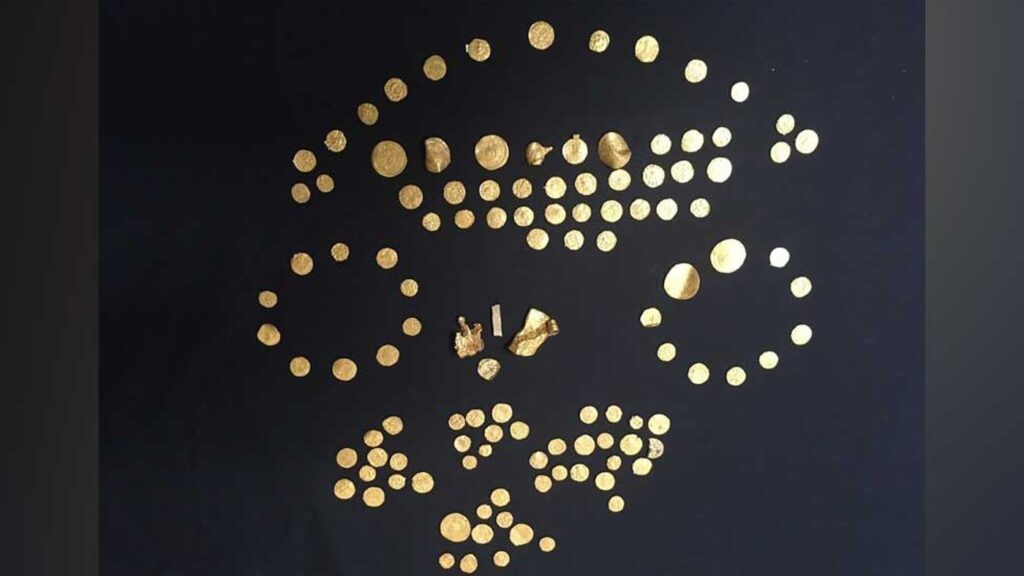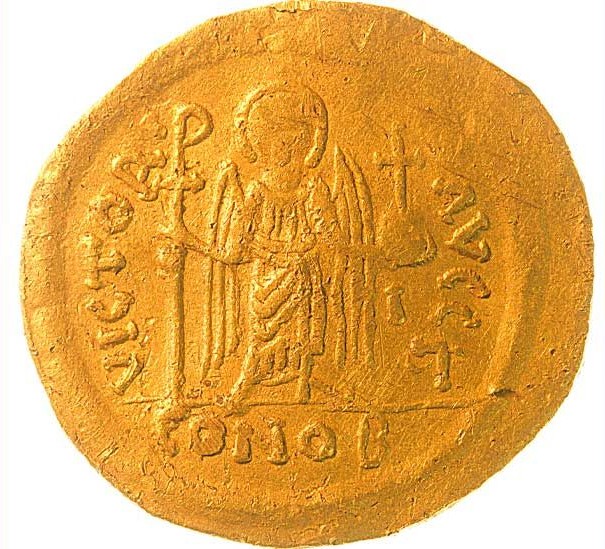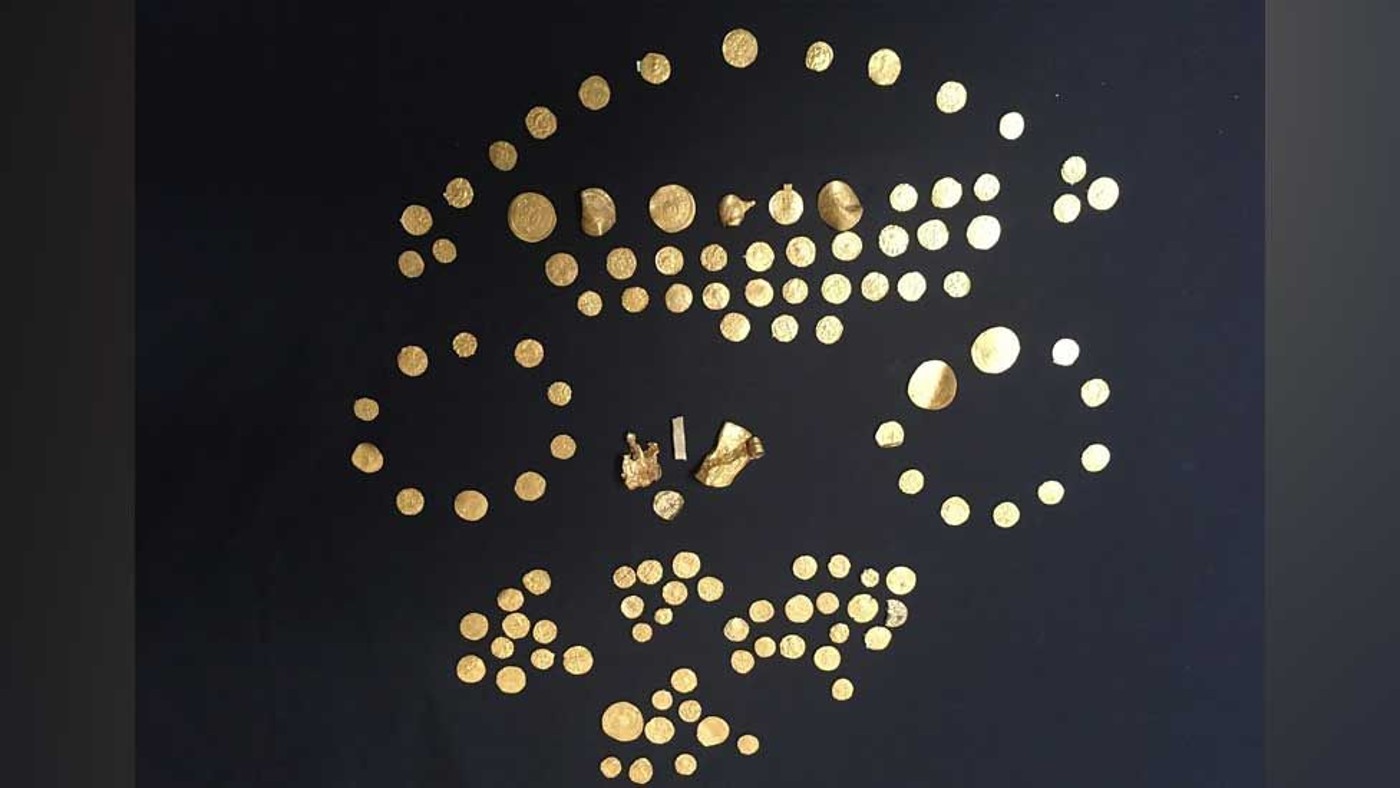
It’s official: 131 gold coins found in a field in Norfolk, England represent the largest Anglo-Saxon gold coin hoard ever discovered, a find which is being described as one of “international importance.”
With the first coin found in 1991, and the rest found in 2014, the hoard was long undergoing “Treasure Review” by the appropriate antiquities authority. A stamped pendant, gold ingot, and two unidentified pieces accompanied the coins, which shed golden light on not only the wealth enjoyed by pre-Viking East Anglian society, but the reach and value of their trade routes, and the development of widespread minting in Europe.
Dated to around 610 CE, it’s thought they were buried together in a funeral barrow, and scattered across a field through centuries of plowing. Ten of the coins arrived in England from the Byzantine Empire, or at least someone who had trade with them, while the other 120 were made in France during the Merovingian Dynasty.
“It may well be that the hoard was assembled by someone traveling through Frankia in the course of trade,” writes numismatist Dr. Adrian Marsden, who told the BBC, “all the coins were minted on the continent, as we didn’t have gold coins of our own then.”
Indeed, Anglo-Saxon hoards of multiple thousands have been found containing silver coins, but as the yellow metal is extremely rare in English earth, the find is of unique importance. The marks of 54 separate “moneyers” or mints, were found on the coins by Marsden.
RELATED: A Lost Sunken City of Gold and Jewels Found in the Mud of Indonesian River
The Norfolk hoard gained some fame in 2017 when one of the two amateur detectorists who found it was handed a 16-month jail term after it was found he had sold ten of the coins to an antique dealer.

Today, having been declared officially as treasure, the Norwich Castle and Museum hopes to acquire it for their collection.
MORE: Amateurs Claim to be ‘On the Verge’ of Uncovering Long Lost Treasure Horde Worth Over $20 Billion
Norwich Castle and Art Gallery curator Tim Pestell described the hoard as a globally important find that “reflects the wealth and continental connections enjoyed by the early Kingdom of East Anglia.”
SEND This Treasure to All Your Gold Seeking Friends on Social Media…




















